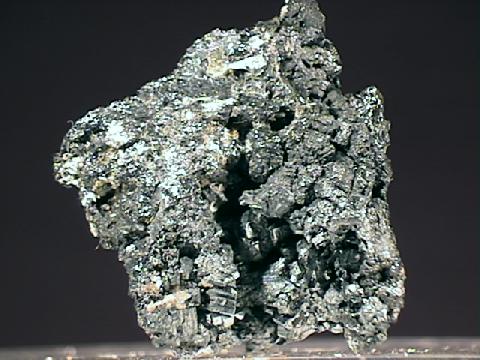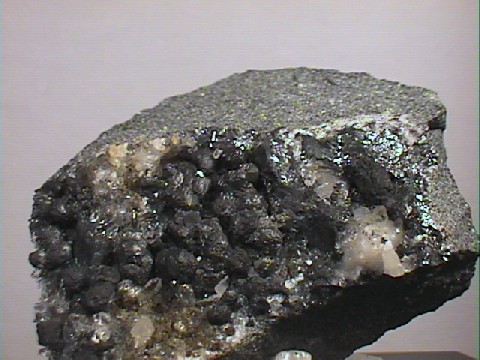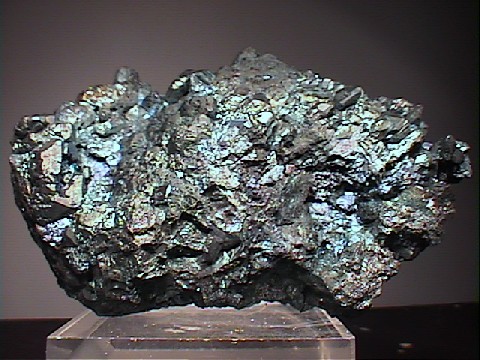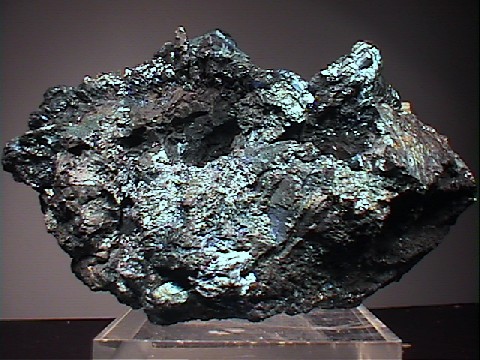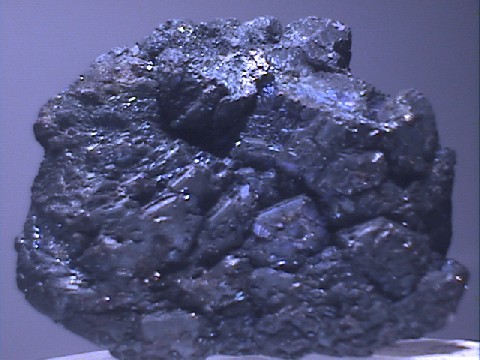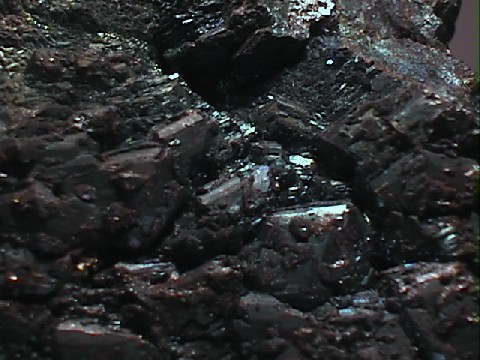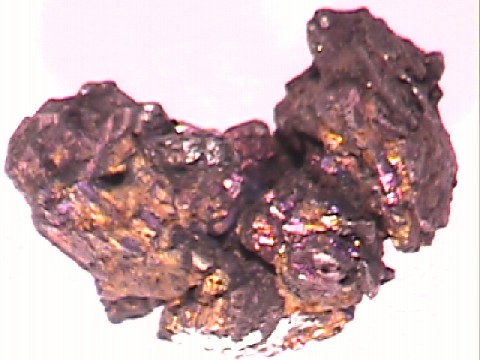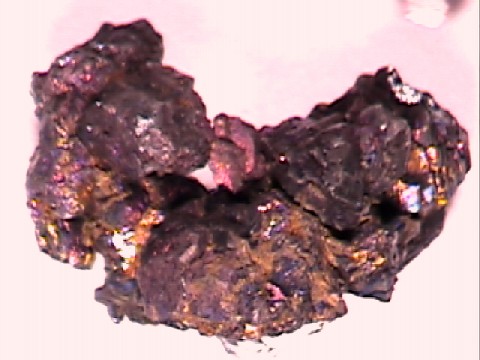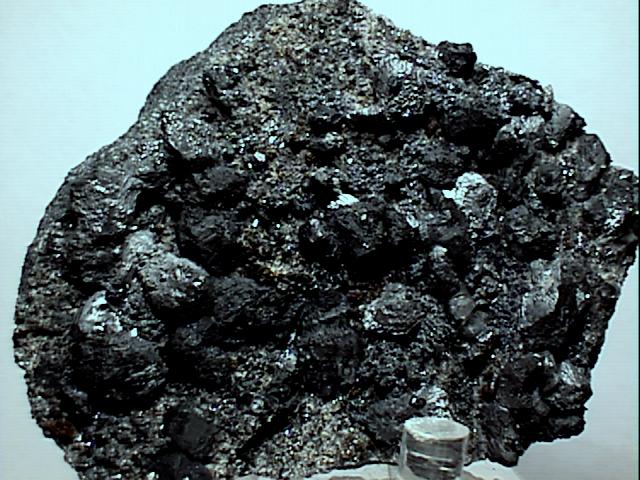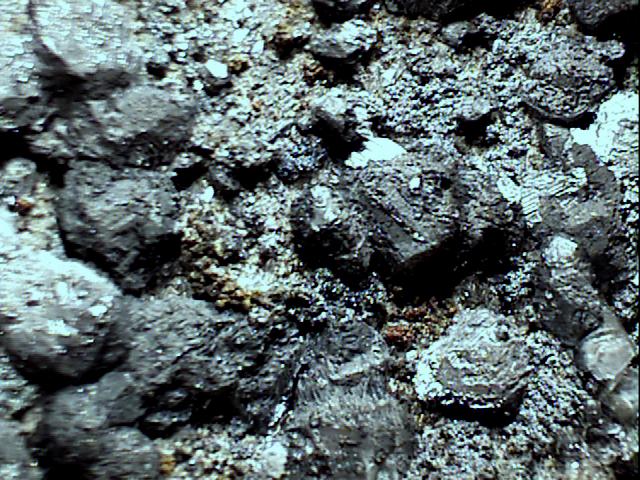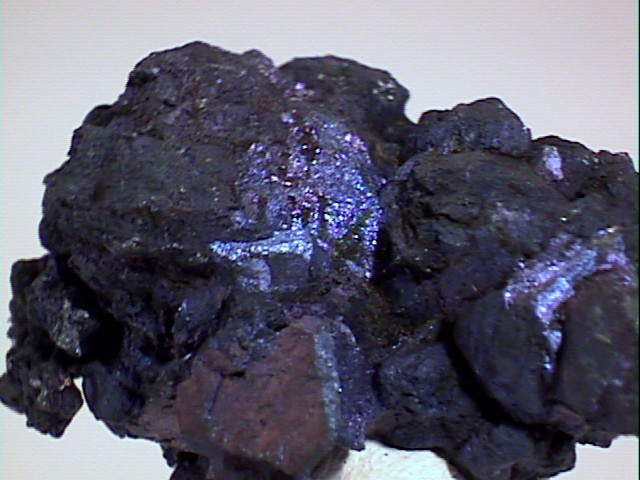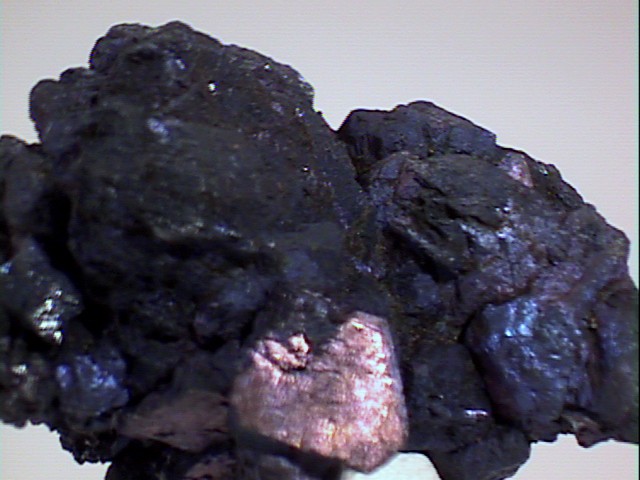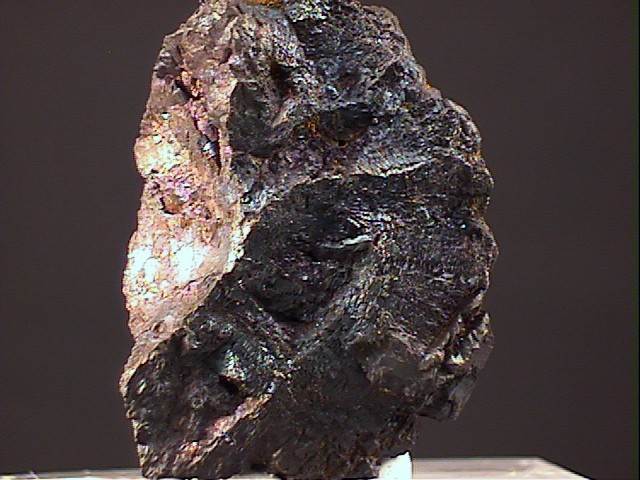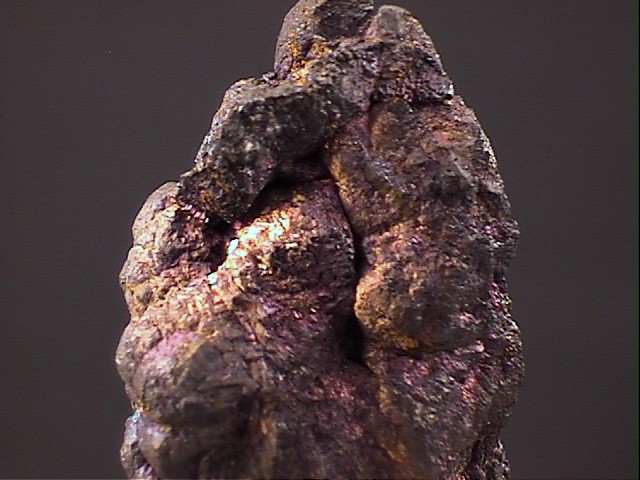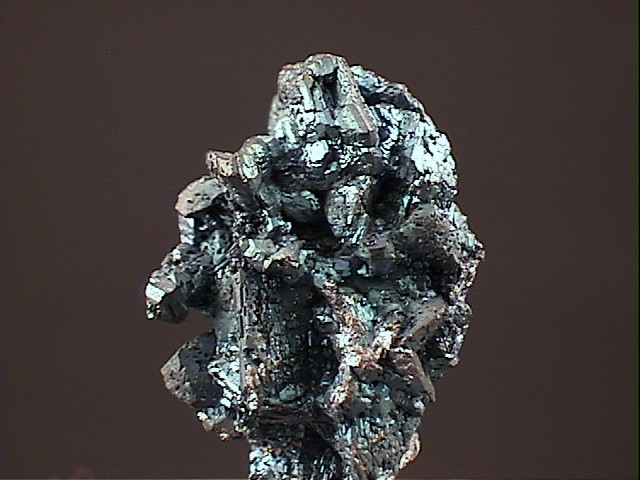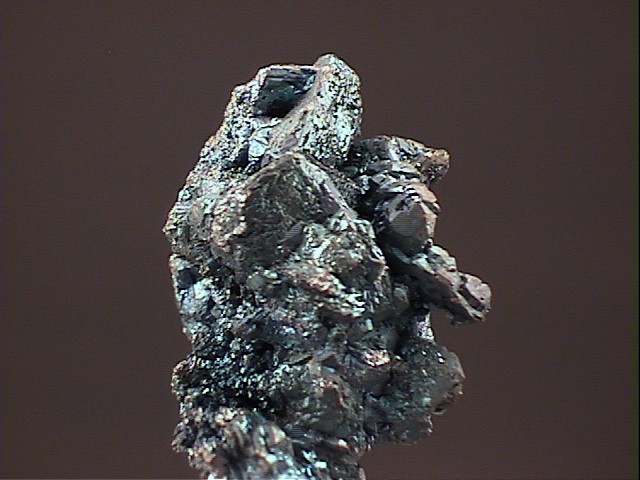 THE MINERAL CHALCOCITE
THE MINERAL CHALCOCITE
- Chemistry: Cu2S, Copper Sulfide
- Class: Sulfides
- Uses: As a minor ore of copper and as mineral specimens.
Specimens
Chalcocite occurs as a secondary mineral in many ore bodies in a zone called the supergene enrichment zone. Called a secondary enrichment mineral, although also a primary mineral as well, chalcocite commonly forms from the alteration of primary copper minerals that are attacked above the water table by oxygen. The oxygenated copper fluids descend to the water table where a reaction with primary ores results in the copper being reduced back to a sulfide, most commonly chalcocite. Ore bodies will have a layer of chalcocite which corresponds to the present or a past water table level and this layer is called a "chalcocite blanket". The chalcocite blanket is richer in copper than the upper oxidized portion of the ore body and usually richer than the primary unaltered ores below. The chalcocite blanket represents a real gold mine, or should that be copper mine, to the copper prospectors.
Fine crystals of chalcocite are quite uncommon and are much sought after. The now depleted mines at Cornwall, England and Bristol, Connecticut produced the most famous clusters of wonderfully formed chalcocite crystals. Some new localities with well formed crystals are promising, but so far the specimens from those old mines are the only good chalcocite crystals available on the market. The heavily striated pseudohexagonal tabular crystals are real classics for the mineral collector and often command an equally classic price.
Since chalcocite is a secondary mineral that forms from the alteration of other minerals, it has been known to form pseudomorphs of many different minerals. A pseudomorph is a mineral that has replaced another mineral atom by atom, but it leaves the original mineral's crystal shape intact. Chalcocite has been known to form pseudomorphs of the minerals bornite, covellite, chalcopyrite, pyrite, enargite, millerite, galena and sphalerite. Pseudo means false and morph means shape or form, thus pseudomorph means false shape since the mineral is chalcocite but the shape is that of a covellite crystal, for example.
PHYSICAL CHARACTERISTICS:
- Color is dark gray to black.
- Luster is metallic.
- Transparency: Crystals are opaque.
- Crystal System is orthorhombic; 2/m 2/m 2/m below 105 degrees celsius and hexagonal; 6/m 2/m 2/m above 105 degrees celsius.
- Crystal Habits include pseudohexagonal tabular to prismatic crystals often with a shallow pyramidal truncation with a flat point. Also found massive and compact. Twinning is common and sometimes results in a six pointed star shaped cyclic twin called a trilling or in elbow shaped twins.
- Cleavage is imperfect in two directions, prismatically.
- Fracture is conchoidal.
- Hardness is 2.5 - 3
- Specific Gravity is approximately 5.5 - 5.8 (above average for metallic minerals)
- Streak is shiny black to lead gray.
- Other Characteristics: Crystals are usually deeply grooved with lateral striations and a tarnish will tend to dull the luster of crystals over time.
- Associated Minerals are quartz, enargite, malachite, azurite, copper, cuprite, tetrahedrite, bornite, tennantite, chalcopyrite, covellite, pyrite and other sulfides.
- Notable Occurrences include Bristol, Connecticut, Butte, Montana, Morenci and Bisbee, Arizona and Bingham Canyon, Utah, Ducktown, Tennessee, USA; Cornwall, England; Tsumeb, Namibia; Tuscany, Italy and Rio Tinto, Spain.
- Best Field Indicators are crystal habit, streak, striations, color and associations.



